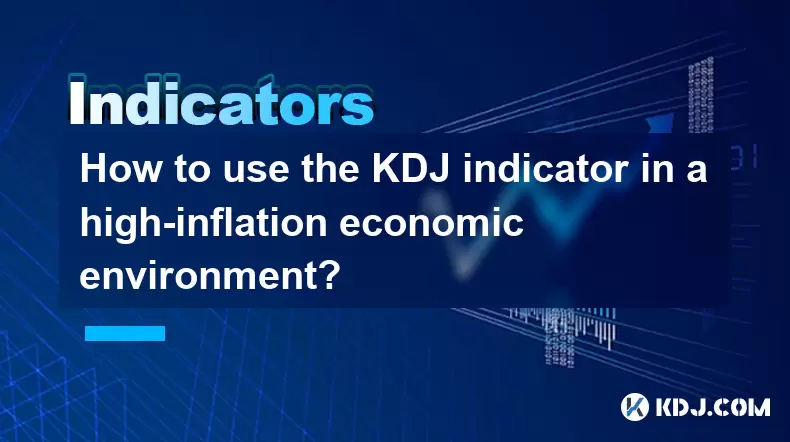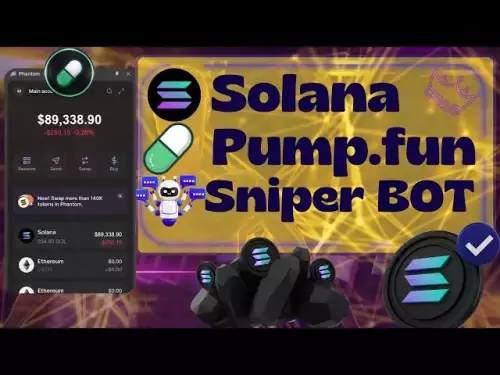-
 Bitcoin
Bitcoin $115100
-1.30% -
 Ethereum
Ethereum $4758
-1.70% -
 XRP
XRP $3.027
-2.19% -
 Tether USDt
Tether USDt $0.9998
-0.01% -
 BNB
BNB $883.2
-1.42% -
 Solana
Solana $204.0
2.62% -
 USDC
USDC $1.000
0.02% -
 Dogecoin
Dogecoin $0.2371
-0.97% -
 TRON
TRON $0.3612
-1.24% -
 Cardano
Cardano $0.9128
-2.19% -
 Chainlink
Chainlink $26.13
-3.93% -
 Hyperliquid
Hyperliquid $44.73
0.90% -
 Sui
Sui $3.715
-0.56% -
 Stellar
Stellar $0.4153
-2.41% -
 Ethena USDe
Ethena USDe $1.000
-0.04% -
 Bitcoin Cash
Bitcoin Cash $588.9
-2.06% -
 Avalanche
Avalanche $25.91
3.27% -
 Hedera
Hedera $0.2525
-1.45% -
 Litecoin
Litecoin $120.9
-1.35% -
 UNUS SED LEO
UNUS SED LEO $9.607
0.30% -
 Toncoin
Toncoin $3.382
-0.31% -
 Shiba Inu
Shiba Inu $0.00001329
-0.38% -
 Uniswap
Uniswap $11.38
-1.67% -
 Polkadot
Polkadot $4.222
2.83% -
 Aave
Aave $354.5
4.93% -
 Dai
Dai $0.0000
0.00% -
 Bitget Token
Bitget Token $4.704
-1.49% -
 Cronos
Cronos $0.1565
1.83% -
 Ethena
Ethena $0.7463
1.55% -
 Monero
Monero $265.8
-0.39%
How to use the KDJ indicator in a high-inflation economic environment?
In high-inflation markets, adjust KDJ settings to 14,5,3 for smoother signals and combine with volume analysis to filter false crossovers in volatile crypto conditions.
Aug 13, 2025 at 11:36 am

Understanding the KDJ Indicator in Volatile Markets
The KDJ indicator is a momentum oscillator widely used in technical analysis, particularly in cryptocurrency trading. It consists of three lines: %K (the fast line), %D (the slow line, which is a moving average of %K), and %J (a divergence value that reflects the distance between %K and %D). In a high-inflation economic environment, financial markets often experience heightened volatility, and cryptocurrencies can act as both speculative assets and potential inflation hedges. During such periods, price movements may become more erratic, making traditional technical tools like the KDJ especially valuable when properly interpreted.
The %K line is calculated using the formula:
%K = [(Current Close – Lowest Low) / (Highest High – Lowest Low)] × 100
Where the "Lowest Low" and "Highest High" are determined over a specified lookback period, typically 9 periods. The %D line is a 3-period moving average of %K, while %J = 3 × %K – 2 × %D. These values oscillate between 0 and 100, with readings above 80 considered overbought and below 20 deemed oversold. In inflationary conditions, where market sentiment swings rapidly, these thresholds can provide early signals for reversals or continuations.
Adjusting KDJ Parameters for Inflation-Driven Volatility
In a high-inflation context, standard KDJ settings (9,3,3) may generate excessive false signals due to amplified price swings. Traders should consider modifying the input parameters to reduce noise. One effective approach is increasing the lookback period for %K to smooth out erratic movements. For instance:
- Use a 14-period high/low instead of 9 for %K calculation
- Apply a 5-period simple moving average for %D instead of 3
- Keep %J as a derived value but interpret it with caution during sharp corrections
This adjustment increases the signal reliability by filtering out short-term noise. On platforms like TradingView or Binance Trading Terminal, users can customize the KDJ indicator by accessing the indicator settings. Navigate to the chart, click "Indicators," search for "KDJ," and select "Edit." Modify the "Length" field to 14, change the "Smoothing" parameter to 5, and confirm. The revised indicator will now reflect slower, more stable crossovers, which are better suited for volatile crypto markets under inflationary pressure.
Identifying Divergences During Inflation Peaks
One of the most powerful applications of the KDJ in inflationary environments is detecting bullish and bearish divergences. When inflation surges, asset prices may continue to fall even as the KDJ begins to rise from oversold levels, signaling underlying strength. Conversely, prices may climb on speculative momentum while the KDJ fails to reach new highs, indicating weakening momentum.
To spot a bullish divergence:
- Observe that the cryptocurrency price makes a lower low
- Confirm that the %K or %D line forms a higher low
- Wait for the %K line to cross above the %D line in the oversold zone (<20)
- Enter a long position only after volume confirms the reversal
For a bearish divergence:
- Identify a higher high in price
- Notice a lower high in the KDJ lines, especially %D
- Watch for %K crossing below %D in the overbought zone (>80)
- Consider shorting or exiting long positions when candlestick patterns align (e.g., shooting star)
These divergence patterns are particularly effective in markets where inflation drives panic selling or FOMO buying, as they highlight shifts in momentum before price reflects them.
Combining KDJ with Inflation-Adjusted Volume Metrics
Volume plays a critical role in validating KDJ signals, especially when inflation distorts price action. In cryptocurrency markets, on-chain volume and exchange inflows/outflows can serve as inflation-adjusted proxies for real demand. To enhance KDJ accuracy:
- Overlay volume-weighted average price (VWAP) on the chart
- Use KDJ crossovers only when accompanied by volume spikes above the 20-period average
- Monitor stablecoin dominance trends; rising USDT or USDC volume during KDJ oversold conditions may signal capital preservation ahead of a rebound
For example, if Bitcoin drops to $58,000 amid high inflation news and the KDJ hits 18, check whether stablecoin deposits on major exchanges are increasing. If volume is low and stablecoin inflows are flat, the oversold signal may lack conviction. However, if exchange inflows of USDT surge by 30% within 24 hours alongside a %K/%D bullish crossover, it suggests traders are positioning for a rebound, increasing the signal’s reliability.
Using KDJ on Multiple Timeframes for Macro Confirmation
Inflation impacts different time horizons unevenly. Short-term traders may react to CPI reports within minutes, while long-term investors adjust over weeks. To filter out noise, apply the KDJ across multiple timeframes:
- Analyze the daily chart for primary trend direction
- Switch to the 4-hour chart to time entries based on %K/%D crossovers
- Use the 15-minute chart to fine-tune stop-loss and take-profit levels
For instance, if the daily KDJ is rising from 25 and the 4-hour %K crosses above %D at 19, with the 15-minute chart showing %J exiting oversold, this multi-timeframe alignment strengthens the buy signal. Conversely, if only the 15-minute KDJ shows a bullish crossover while higher timeframes remain in overbought territory, the signal should be treated as a countertrend trap.
Risk Management When Trading KDJ Signals in Inflationary Cycles
Even accurate KDJ readings can fail during extreme macroeconomic stress. Therefore, risk mitigation is essential. Set stop-loss orders based on recent swing lows or ATR (Average True Range) values. For example:
- If buying at $62,000 after a KDJ crossover, place a stop-loss at $59,500, just below the last swing low
- Use a trailing stop once the trade moves in your favor, pegged to 1.5× the 14-period ATR
- Limit position size to 2–3% of total portfolio per KDJ-based trade to withstand volatility
Avoid overtrading during CPI announcement windows. Pause KDJ-based entries 2 hours before and after major economic data releases, as slippage and whipsaws are common. Instead, wait for the KDJ to stabilize post-announcement before resuming analysis.
Frequently Asked Questions
Q: Can the KDJ indicator be used during hyperinflation when crypto markets are extremely volatile?
Yes, but with modified settings. Increase the %K period to 21 and %D smoothing to 7 to reduce false signals. Focus on weekly divergences rather than intraday crossovers, as hyperinflation causes extended momentum runs.
Q: How does stablecoin inflation affect KDJ interpretation?
Rapid issuance of stablecoins (e.g., USDT) during fiat inflation can fuel crypto rallies. Watch for KDJ overbought signals coinciding with sharp increases in stablecoin supply, as these may precede corrections once minting slows.
Q: Should I disable KDJ during central bank emergency meetings?
Not necessarily. Keep it active but avoid taking new positions. Use the indicator to monitor post-meeting momentum shifts. A %K rebound from below 10 within 30 minutes of a dovish announcement can signal a strong recovery.
Q: Is KDJ effective for altcoins during inflation-driven Bitcoin rallies?
Yes, but altcoins often lag. Wait for Bitcoin’s daily KDJ to stabilize below 80 before entering altcoin longs. Use the KDJ crossover on Ethereum as a secondary confirmation before deploying capital into smaller-cap cryptos.
Disclaimer:info@kdj.com
The information provided is not trading advice. kdj.com does not assume any responsibility for any investments made based on the information provided in this article. Cryptocurrencies are highly volatile and it is highly recommended that you invest with caution after thorough research!
If you believe that the content used on this website infringes your copyright, please contact us immediately (info@kdj.com) and we will delete it promptly.
- Crypto, Pepe, and Investment: Navigating the Meme Coin Mania in 2025
- 2025-08-24 06:45:29
- Crypto Market Recovery: Unearthing ROI Gems in 2025
- 2025-08-24 05:25:35
- Aave, World Liberty, and Token Allocation: Decoding the DeFi Buzz
- 2025-08-24 05:25:35
- Crypto Presales & Exchange Launches: What's Hot Now?
- 2025-08-24 05:45:17
- Meme Coin Mania: Experts Rank Layer Brett as the Top Contender
- 2025-08-24 05:45:18
- Sui Price Prediction: Will the Breakout Move Stick?
- 2025-08-24 06:05:29
Related knowledge

What does it mean when the +DI and -DI cross frequently in the DMI indicator but the ADX is flattening?
Aug 11,2025 at 03:15am
Understanding the DMI Indicator ComponentsThe Directional Movement Index (DMI) is a technical analysis tool composed of three lines: the +DI (Positive...

What does the sudden appearance of a "dark cloud cover" candlestick pattern during an uptrend indicate?
Aug 13,2025 at 11:35am
Understanding the 'Dark Cloud Cover' Candlestick PatternThe dark cloud cover is a bearish reversal pattern in technical analysis that typically appear...

What does it mean when the moving average, MACD, and RSI all send buy signals simultaneously?
Aug 11,2025 at 01:42pm
Understanding the Convergence of Technical IndicatorsWhen the moving average, MACD, and RSI all generate buy signals at the same time, traders interpr...

What does it mean when both the KDJ indicator and the RSI show overbought signals simultaneously?
Aug 13,2025 at 11:35am
Understanding the KDJ Indicator in Cryptocurrency TradingThe KDJ indicator is a momentum oscillator derived from the Stochastic Oscillator, widely use...

What does it mean when the price is trading above the SAR indicator but the red dots are densely packed?
Aug 09,2025 at 11:49pm
Understanding the SAR Indicator and Its Visual SignalsThe SAR (Parabolic Stop and Reverse) indicator is a technical analysis tool used primarily to de...

What does it mean when the candlestick chart forms a "Morning Star" but trading volume is sluggish?
Aug 12,2025 at 06:28pm
Understanding the Morning Star Candlestick PatternThe Morning Star is a three-candle bullish reversal pattern commonly observed in cryptocurrency pric...

What does it mean when the +DI and -DI cross frequently in the DMI indicator but the ADX is flattening?
Aug 11,2025 at 03:15am
Understanding the DMI Indicator ComponentsThe Directional Movement Index (DMI) is a technical analysis tool composed of three lines: the +DI (Positive...

What does the sudden appearance of a "dark cloud cover" candlestick pattern during an uptrend indicate?
Aug 13,2025 at 11:35am
Understanding the 'Dark Cloud Cover' Candlestick PatternThe dark cloud cover is a bearish reversal pattern in technical analysis that typically appear...

What does it mean when the moving average, MACD, and RSI all send buy signals simultaneously?
Aug 11,2025 at 01:42pm
Understanding the Convergence of Technical IndicatorsWhen the moving average, MACD, and RSI all generate buy signals at the same time, traders interpr...

What does it mean when both the KDJ indicator and the RSI show overbought signals simultaneously?
Aug 13,2025 at 11:35am
Understanding the KDJ Indicator in Cryptocurrency TradingThe KDJ indicator is a momentum oscillator derived from the Stochastic Oscillator, widely use...

What does it mean when the price is trading above the SAR indicator but the red dots are densely packed?
Aug 09,2025 at 11:49pm
Understanding the SAR Indicator and Its Visual SignalsThe SAR (Parabolic Stop and Reverse) indicator is a technical analysis tool used primarily to de...

What does it mean when the candlestick chart forms a "Morning Star" but trading volume is sluggish?
Aug 12,2025 at 06:28pm
Understanding the Morning Star Candlestick PatternThe Morning Star is a three-candle bullish reversal pattern commonly observed in cryptocurrency pric...
See all articles

























































































